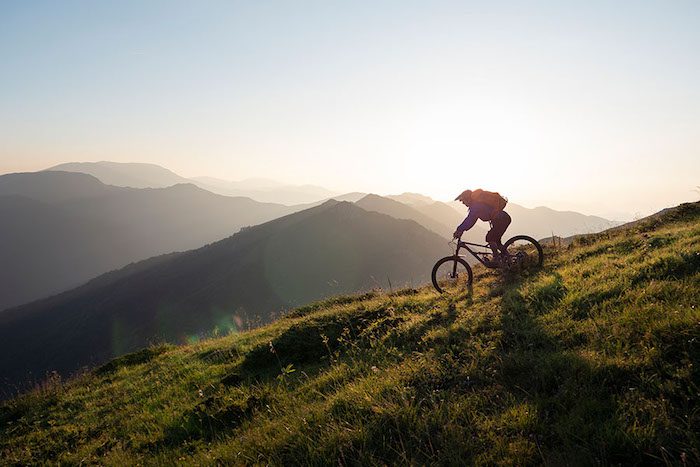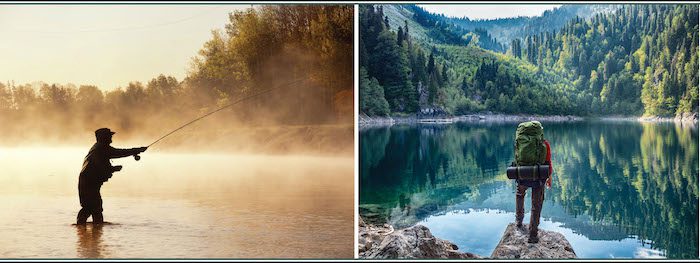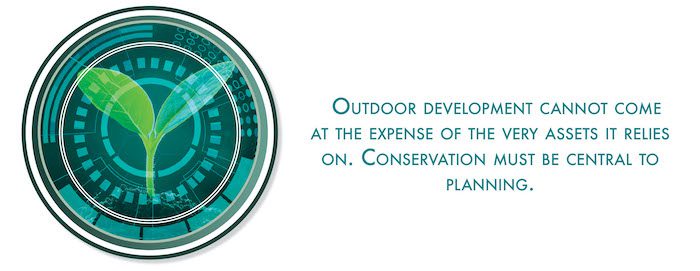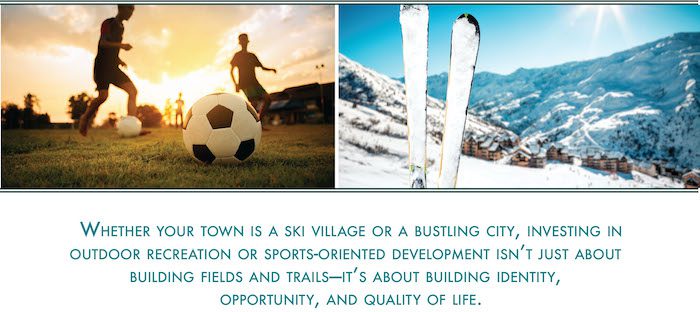By Shawn Massey, CCIM, CRRP, ALC, Partner, Executive Vice President at TSCG
In a post-pandemic world that prioritizes experience, wellness, and quality of life, the outdoor recreation industry and sports-oriented real estate development have emerged as powerful drivers of economic revitalization. We now sit at the intersection of sports tourism and outdoor recreation, and communities—both urban and rural—are racing to creatively leverage these sectors to boost their local economies.
The Economic Force of Outdoor Recreation
Outdoor recreation is no small niche; it’s a trillion-dollar powerhouse. According to the U.S. Bureau of Economic Analysis, outdoor recreation contributes over $1 trillion to the U.S. economy annually, accounting for 2.2% of GDP and supporting 4.98 million jobs—roughly 3.2% of total U.S. employment. It’s not just about trail mix and kayaks. The outdoor recreation economy encompasses gear manufacturing, logistics, hospitality, technology, retail, and more.
And it’s growing. Over the past decade, the outdoor recreation sector has outpaced the overall economy in growth. Forty-nine states saw growth in their outdoor economies—proof that this isn’t just a coastal trend or a mountain-town phenomenon.
Redefining Recreation: More Than Just Mountains and Meadows
Outdoor recreation includes activities such as:
- Epic Hiking & Backpacking
- Freshwater Fishing
- Whitewater Rafting
- Pickleball and Padel
- Alpine & Cross-Country Skiing
- Rock Climbing
- Camping & RV’ing
- Cycling
- Disc Golf
- Snowmobiling
- Bird Watching
These aren’t just hobbies; they are economic engines.
Sports Tourism: The $50 Billion Game-Changer
Parallel to outdoor recreation is the rise of sports tourism—particularly youth sports. These events generate an estimated $50 billion in annual economic impact in the U.S. and are driving the development of large-scale sports and entertainment complexes.

When families travel for sports, they don’t just show up for the tournament—they make it a weekend getaway. Communities and developers are responding by creating family-friendly, mixed-use developments with hotels, restaurants, entertainment, and retail surrounding these sports hubs.
What’s Typically Included in Sports-Oriented Developments?
- Family-friendly developments
- Family entertainment centers (bowling, laser tag, etc.)
- Hotels
- Eatertainment (e.g., TopGolf, Chicken N Pickle)
- Premium retail
Guide for Communities: Starting the Journey
Here are foundational steps for any community considering outdoor or sports-oriented development:
- Do a SWOT Analysis — Understand your assets and limitations.
- Put Residents First — If locals love it, visitors will too.
- Identify Catalytic Projects — Start with a signature initiative.
- Forge Community Partnerships — Involve education, nonprofits, business.
- Unite the Community — Equity and inclusion should be baked in.
- Prioritize Infrastructure — Trails, courts, and parks are not optional.
- Embrace Connectivity — Link recreation zones to existing retail, hotels, or districts.
Challenges: Proceed with Eyes Open
Success isn’t guaranteed. These projects can be complex and costly:
- Funding and public-private partnerships must align
- Rising construction costs ($300–$500 PSF)
- Environmental and natural resource conservation must be prioritized
- Sustainable planning and inclusive design is essential
- Establishment of TIFs and special tax districts might be needed
Urban vs. Rural Opportunities
Rural towns often have natural landscapes ripe for hiking, biking, and nature-based tourism. In contrast, urban areas are better suited for repurposed or ground-up developments like sports complexes or indoor recreation.
Examples of Outdoor Recreation Catalysts in Rural Communities:
- Cheyenne, Wyoming: Cheyenne LEADS, the city’s economic development group, has turned Cheyenne Frontier Days into a major driver of tourism and economic activity. Known as the “World’s Largest Outdoor Rodeo,” the ten-day event attracts nearly 200,000 visitors, generating $40.3 million in direct visitor spending. It blends heritage tourism with high-dollar PRCA events and concerts, attracting investment across retail and hospitality sectors in Wyoming and neighboring states.
- Gunnison, Colorado: Leveraged access to the Gunnison National Forest and mountain biking to attract visitors and new residents.
- Jasper, Alabama: Created a lakefront master plan focused on hiking and fishing, spurring cottage industries and artisan markets.
- Poultney, Vermont: Rebranded as a nature-based artisan town, connecting outdoor adventure to downtown revitalization.
- Bangor, Maine: Focused on forest trails, river kayaking, and snowmobiling as a year-round attraction for New England visitors.
Examples of Sports Tourism Catalysts in Urban/Suburban Areas:
- Rocky Top Sports World, Gatlinburg, TN
- Fieldhouse USA, Grapevine, TX
- Hoover Metropolitan Complex, Hoover, AL
- Paradise Coast Sports Complex, Naples, FL
- Boo Williams Sportsplex, Hampton, VA
These communities have mastered the art of turning sports into a high-impact tourism engine that complements retail, hospitality, and mixed-use development.
Urban Memphis Example: A Case Study in Transformation
Twenty years ago, Memphis, TN was not known for outdoor recreation or elite sports facilities. Fast forward to today, and it’s a model for community reinvention:
- Rails to Trails & Greenline: From worst biking city to most improved—now with over 365 miles of trails.
- Shelby Farms Park: A $100M transformation into one of the top five urban parks in the country.
- Liberty Park: Anchored by a 235,000 SF youth sports complex and the ongoing $220M Liberty Bowl renovation.
- Mike Rose Soccer Complex and Leftwich Tennis Center: Professional-grade, community-activated assets.
- Tom Lee Park: A $65M transformation into a vibrant riverfront destination.
- FedEx Forum Renovation: $550M+ into the home of the Memphis Grizzlies.
Result? These quality-of-life investments helped catalyze:
- The $5.6B Blue Oval City by Ford/SK
- The world’s largest supercomputer via xAI
- A $12.6B expansion by St. Jude
- A $10M Google plant in nearby West Memphis
These investments likely wouldn’t have landed without the city’s commitment to outdoor and sports-based infrastructure that boosts both talent retention and livability.
Conservation: The Backbone of Recreation
Outdoor development cannot come at the expense of the very assets it relies on. Conservation must be central to planning. Outdoor recreation contributes more to the GDP than oil, gas, and mining, yet it receives just 0.16% of federal funding. That has to change.
We must protect and expand access to trails, waterways, forests, and parks—not just for today’s users but for future generations.
Connected Development: Where the Magic Happens
The most successful projects happen when recreation and sports are connected to existing infrastructure:
- Tie a soccer complex to a nearby shopping center
- Add pickleball courts adjacent to hotels and restaurants
- Build trails that connect neighborhoods to entertainment districts
Rather than starting from scratch, these connected assets fast-track economic impact and community activation.
Conclusion: A Field of Dreams Strategy
Whether your town is a ski village or a bustling city, investing in outdoor recreation or sports-oriented development isn’t just about building fields and trails—it’s about building identity, opportunity, and quality of life.
When done thoughtfully, these investments:
- Revitalize rural economies
- Reimagine urban landscapes
- Retain and attract talent
- Boost local business
- Strengthen community well-being
If you build it—and build it right—they will come.









